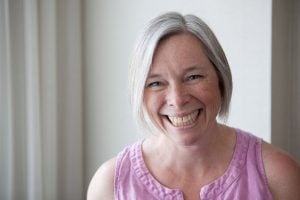
In this research journey, where I have been trying to map successful literacy workshop practices onto a math workshop, I have been considering the element of choice a great deal. From a very young age, children are taught how to select “just-right books.” The emphasis is on choice. Choice matters because it increases engagement. Choice matters because it encourages ownership. Choice matters because when our children leave us, we need them to continue choosing to read whether we are there or not. We teach them to choose books so that they will continue to choose books for their entire lives.
Yet math class has not traditionally been a place where choice is valued. Teachers are in charge of the learning. Teachers assign tasks they hope will promote learning. And often learning does happen. But I’m not sure any of the tasks teachers assign would ever be taken up spontaneously outside the classroom the way readers pick up a book outside reading workshop. One could say this isn’t a fair comparison. The two are inherently different. But if I think about why we encourage choice in reading workshop, the same should apply in math—choice matters because it increases engagement and encourages ownership. And if children are to be successful mathematicians, engagement and ownership of the learning are critical.
Katie, the third-grade teacher I am partnering with in my research this year, and I decided to approach planning our math workshop with a focus on understanding the big ideas for a unit, naming those big ideas explicitly, and then offering students choices about how to go about mastering them. Each week when we sit down to plan, we start by looking at a chunk. In our case, our primary curricular resource is Investigations (TERC), so we tend to look at one investigation at a time. We examine the connected standards, we test out some of the activities, and we analyze the provided worksheets. Then we come up with a learning target that speaks to the overarching goals for the week. For example, in our first week of a geometry unit, the learning targets were “I can use centimeters, inches, meters, and yards to measure accurately” and “I can measure the perimeter of a 2 dimensional object.” We don’t necessarily use the resources provided with the curriculum. We may end up designing our own activities, or we may use resources we find from other places. We consider the curriculum one tool of many we can draw from.
We introduce the learning targets in a variety of ways; sometimes with a sample problem to work on with a partner, sometimes with a game, and sometimes in small groups. Most importantly, we try to keep this introduction short and then explain to students what their choices for the week will be. We emphasize that as they make these choices, they are doing so based on what they think they need to master the learning target. The choices usually include a game, an applied problem that requires some creative thinking and/or writing, and practice pages that give children a chance to solidify their understanding of the concept.
While this may sound similar to math centers, in which students rotate through a predetermined set of activities each day, there are a few important distinctions. First, the activities are all specifically designed to support students in meeting a learning target. They are not merely fun math activities. Second, there is no predetermined rotation every student must complete. In fact, this is where the choice element is so important. Students choose how they will spend their time during math by thinking about how confident they feel in meeting the learning target. Because the emphasis is on the learning, and not the doing, the element of reflection at the end of the workshop is critical and is perhaps what does the most to distinguish it from math centers.
At the end of each workshop, we give students a chance to reflect on their choices. About five minutes before the end of the period, students get out their math folders and record their work for the day. The questions are simple, but profound. They record their thoughts in this grid in the front of their math folders.
| Date | What I chose | Why I chose it | Did I get what I needed? | What Will I Do Tomorrow? |
Other students have also started to shift the way they view their work in math class. When we do our teaching well, we hear students say things like “I think I’m still a bit shaky on fractions on a number line, so I want to work on the number line today.” In other words, when we are very clear about what we want students to learn, they are able to look at their own work and determine whether they understand any given concept and whether they would like to explore it further. While the occasional student still asks, “What should I do next?” it happens less and less at this point in the year, when students have had more experience making choices about how to spend their math workshop.Early on in the life of this chart and these choices, a bright but slightly disengaged boy named Solomon came to share his at the end of the workshop. He had written that he chose to work on some multiplication word problems. In the “why I chose it” column he wrote “because I had to.” I asked Solomon, “What do you mean by this? I don’t think anyone made you do anything here today.” He explained he had been in a small group with Katie, the teacher, and when they were done he still had some problems to work on. So I pried a bit further; “Did she tell you that you had to finish those problems?” He looked a bit sheepish as he replied, “Well, no, but I was in the middle of working on them.” Students are so used to expecting teachers to dictate their work in math class. They assume that the work they do in math class, they do because a teacher told them to. Students are not used to having choice, so it is no surprise Solomon expected his teacher to have the final say about what he should do with his time. I decided to help Solomon reframe how he had spent his time during that workshop and pointed out, “So it sounds like you got really into those problems that Katie taught you how to do, and so you chose to keep working on them.” He agreed and went back and changed what he had written in his chart. Since that early interaction, Solomon has come up with some great challenges for himself during workshop time, and his chart is always filled out with care and thought. I can see, by looking at his charts, that he recognizes he is in charge of his own learning. He makes thoughtful choices for his workshop periods and always reflects on his choices and how he will make adjustments for the next day.
Introducing choice in a math workshop has been exciting, but it also has brought some missteps, some missed opportunities for learning, and many questions. One question I hope to explore further in this research is the following: is it actually choice that matters, or is it finding just-right tasks? Part of why choice is important in reading workshop is that it means all children are reading books they CAN read—a critical aspect of how children grow as readers. Perhaps finding just-right tasks for children in a math workshop is just as important or more important than the aspect of choice. As in most research, Katie and I are finding that dwelling in questions leads us to many new questions, perhaps even more than it leads to answers.
 Katie Charner-Laird has been the principal at the Cambridgeport School in Cambridge, Massachusetts for the past six years. She views her role as an instructional leader, spending large amounts of time in the classroom because, as she says, “there is no perfect lesson. There is only a lesson that perfectly matches the needs of the students.” Over the past two years, Katie has worked to create an approach for teacher’s to be in one another’s classrooms, engaging in what her school calls “collaborative observation.” Teachers observe and collaborate to determine which specific instructional moves work for which specific students. Katie believes that when all of the adults in a school take the stance of a learner, “we create a vibrant learning environment for our students.”
Katie Charner-Laird has been the principal at the Cambridgeport School in Cambridge, Massachusetts for the past six years. She views her role as an instructional leader, spending large amounts of time in the classroom because, as she says, “there is no perfect lesson. There is only a lesson that perfectly matches the needs of the students.” Over the past two years, Katie has worked to create an approach for teacher’s to be in one another’s classrooms, engaging in what her school calls “collaborative observation.” Teachers observe and collaborate to determine which specific instructional moves work for which specific students. Katie believes that when all of the adults in a school take the stance of a learner, “we create a vibrant learning environment for our students.”


